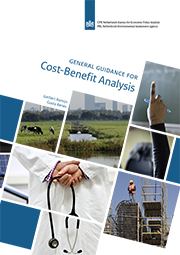General Guidance for Cost-Benefit Analysis

Cost–benefit analysis (CBA) is an important tool for use in the ex ante assessment of policy options. It is an information tool that supports decision-making on policy measures or alternatives to allow decisions to be as objective as possible. CBA provides an overview of the effects, risks and uncertainties of a measure and the resulting costs and benefits to society as a whole.
Downloads
This general CBA guidance by CPB Netherlands Bureau for Economic Policy Analysis and PBL Environmental Assessment Agency describes how to carry out a CBA and the requirements for the various elements of the CBA, with particular attention to the role of CBA in the decision-making process. We discuss the various types of CBA and when these different types can best be used. And because this new general CBA guidance is widely applicable, we also explain the theory underlying CBA. This can be consulted when questions arise over the correct use of CBA, particularly when the policy fields or proposed measures are not usually associated with CBA. Besides setting out some rules and guidelines, this new guidance leaves various aspects open for development in more detail in CBA handbooks for specific policy fields. The emphasis is therefore more on the correct application of the principles rather than on the rigid implementation of a fixed set of procedures.
External author: Gusta Renes (PBL)
